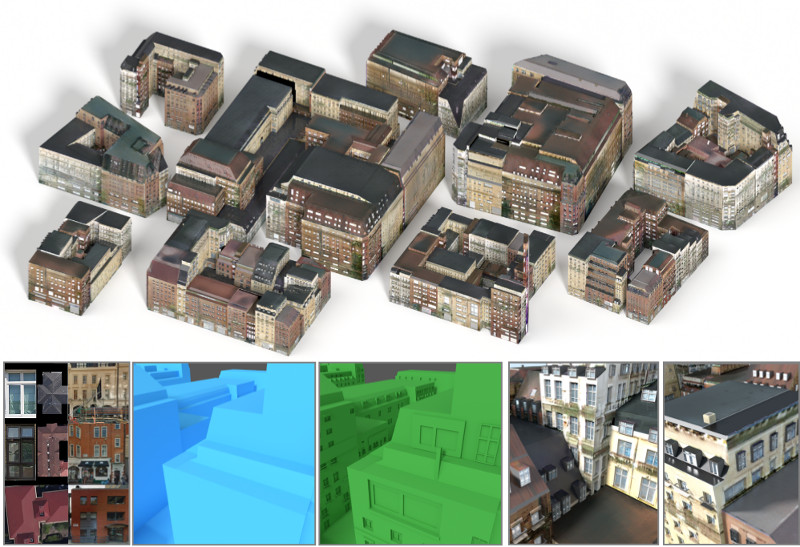FrankenGAN: Guided Detail Synthesis for Building Mass Models
using Style-Synchonized GANs
- Tom Kelly1,3*
- Paul Guerrero1*
- Anthony Steed1
- Peter Wonka2^
- Niloy J. Mitra1^
1University College London 2KAUST 3 University of Leeds
*joint first authors ^ joint last authors
SIGGRAPH-Asia 2018

Abstract
Coarse building mass models are now routinely generated at scales ranging from individual buildings through to whole cities. For example, they can be abstracted from raw measurements, generated procedurally, or created manually. However, these models typically lack any meaningful semantic or texture details, making them unsuitable for direct display. We introduce the problem of automatically and realistically decorating such models by adding semantically consistent geometric details and textures. Building on the recent success of generative adversarial networks (GANs), we propose FrankenGAN, a cascade of GANs to create plausible details across multiple scales over large neighborhoods. The various GANs are synchronized to produce consistent style distributions over buildings and neighborhoods. We provide the user with direct control over the variability of the output. We allow her to interactively specify style via images and manipulate style-adapted sliders to control style variability. We demonstrate our system on several large-scale examples. The generated outputs are qualitatively evaluated via a set of user studies and are found to be realistic, semantically-plausible, and style-consistent.
Paper preview
Images
FrankenGAN's style can be controlled to create a wide variety of architectural styles.
System output for the Madrid dataset.
System output for the Regent dataset.
Colums, left to right: Simple shading, end-to-end Pix2Pix, and BicycleGAN outputs, and FrankenGAN.
Bibtex
@article{KellyGuerreroEtAl_FrankenGAN_SigAsia2018,
author = {Tom Kelly and Paul Guerrero and Anthony Steed and Peter Wonka and Niloy J. Mitra},
title = {FrankenGAN: Guided Detail Synthesis for Building Mass Models Using Style-Synchonized GANs},
year = {2018},
journal = {ACM Trans. Graph.},
volume = {37},
number = {6},
pages = {1:1--1:14},
doi = {10.1145/3272127.3275065},
}
Acknowledgements
This project was supported by an ERC Starting Grant (SmartGeometry StG-2013-335373), KAUST-UCL Grant (OSR-2015-CCF-2533), ERC PoC Grant (SemanticCity), the KAUST Office of Sponsored Research (OSR-CRG2017-3426), Open3D Project (EPSRC Grant \\ EP/M013685/1), and a Google Faculty Award (UrbanPlan).





